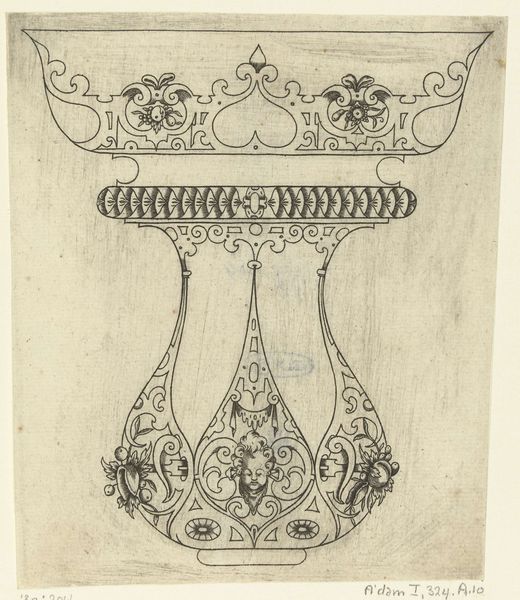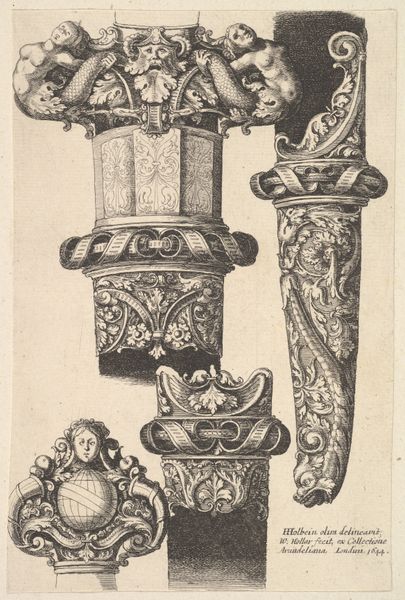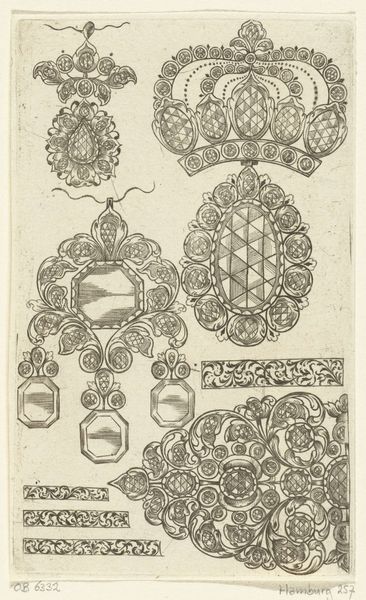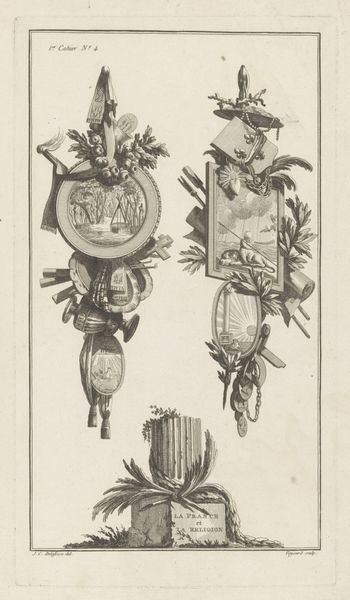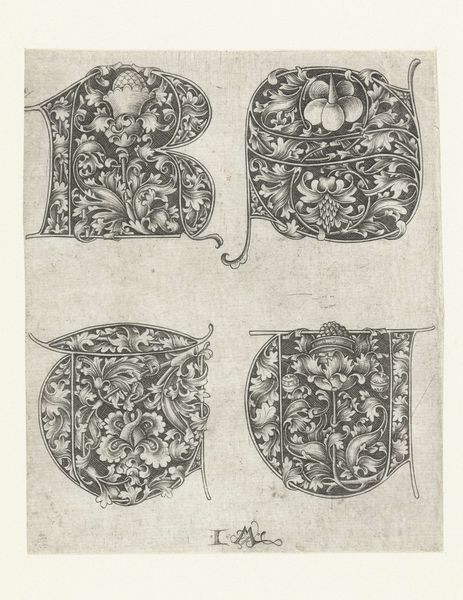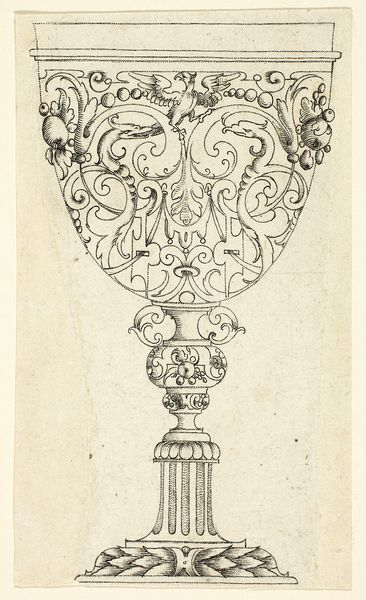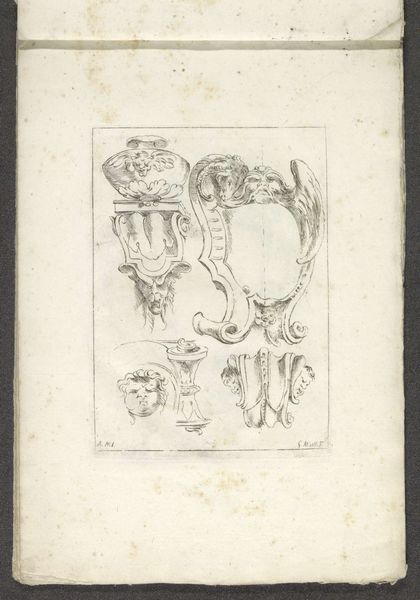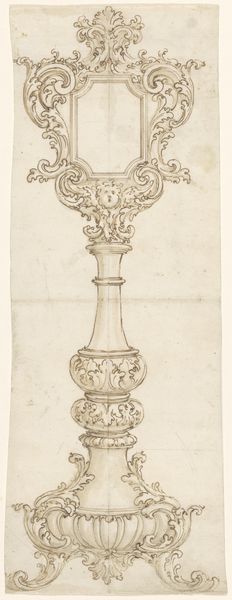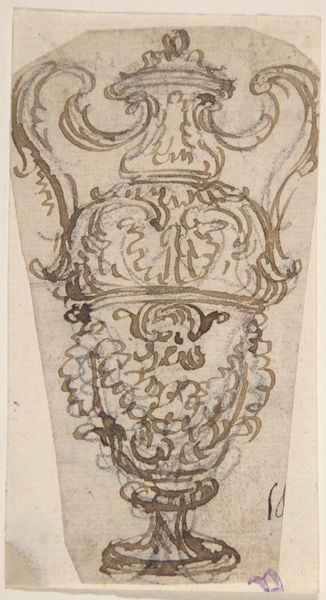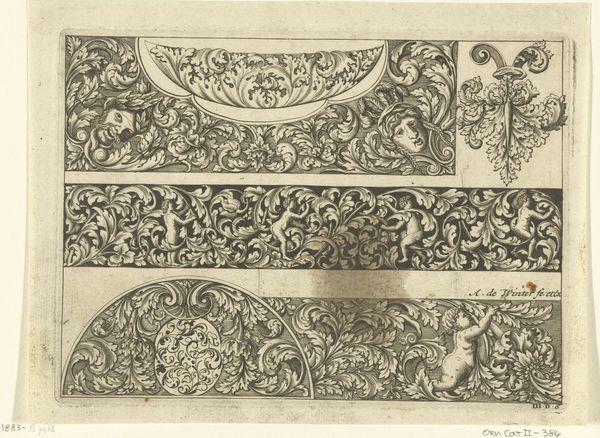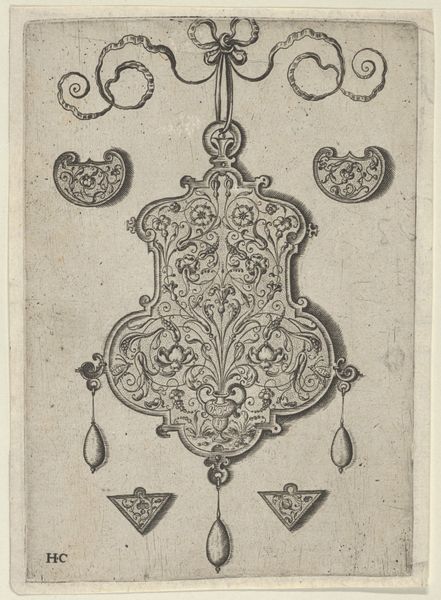
drawing, print, ink, engraving
#
drawing
# print
#
pen sketch
#
form
#
11_renaissance
#
ink
#
geometric
#
line
#
islamic-art
#
history-painting
#
engraving
Dimensions: height 85 mm, width 49 mm, width 55 mm
Copyright: Rijks Museum: Open Domain
Curator: This engraving from 1550 is titled "Onderdelen van een gevest, gedecoreerd met moresken" or "Parts of a Hilt, Decorated with Moresques," created by the artist known only as Monogrammist GG. It appears to be a study for decorative elements, rendered in ink. Editor: Oh, a flurry of curls! It's almost dizzying, this choreography of lines... it has a sort of ornamental exuberance; like the secret language of flowers rendered in iron. Curator: Moresque decoration, also referred to as arabesque, typically integrates plant-like and geometric forms. This type of decoration saw frequent use during the Renaissance in Europe on a range of luxury items. Here we see the artist exploring forms suitable for sword hilts. The print medium itself enabled wider circulation of these designs among craftspeople. Editor: Thinking of a swords handle made with so many vegetal lines and curly ornaments... It becomes more than a weapon, no? Transformed into this object with so much gentle complexity. The raw aggression becomes an object of peace. I like that push and pull. Curator: Precisely! It speaks to the blurring lines between craft and fine art during the Renaissance. Objects of warfare weren't just functional; their aesthetic value signified wealth, status, and, as you suggest, could subtly mediate displays of power. Editor: So the artist, this "Monogrammist GG" — imagine all of these handles glittering, almost as jeweled accessories. Little details in service to… well, I imagine wealthy patrons desiring bespoke weapon elements, an accessible artistic offering of sorts. The lion figures add another layer...a certain imposingness. It speaks to control, no? Curator: It’s easy to view prints like these as products embedded in a commercial system. The print was clearly made as a pattern source and served the function of distributing a particular aesthetic across a variety of locations and workshops. It invites consideration of not just production of sword ornaments but also global material exchanges and networks. Editor: I appreciate considering its physical circulation – this little ambassador of style from a particular time. It really asks the question of why beauty resides even on our blades. Thanks for contextualizing the social landscape in which the print would have been created. Curator: And you've made me consider the artistry involved and, beyond the objects they adorned, what that said of the individuals who wielded the swords. It's been enlightening.
Comments
No comments
Be the first to comment and join the conversation on the ultimate creative platform.
